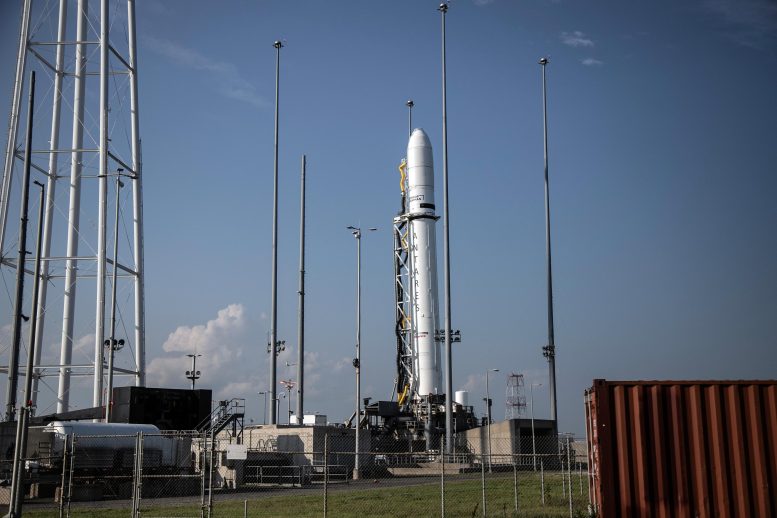
A Northrop Grumman Antares rocket carrying a Cygnus spacecraft loaded with cargo bound for the International Space Station is stood up vertical on Mid-Atlantic Regional Spaceport’s Pad-0A, Friday, July 28, 2023, at NASA’s Wallops Flight Facility in Virginia. Northrop Grumman’s 19th contracted cargo resupply mission with NASA to the International Space Station will deliver more than 8,200 pounds of science and research, crew supplies, and vehicle hardware to the orbital laboratory and its crew. The CRS-19 Cygnus spacecraft is scheduled to launch at 8:31 p.m. EDT, Tuesday, August 1, 2023. Credit: Northrop Grumman/Thom Baur
Expedition 69 crew is preparing for the Cygnus spacecraft delivery to ISS, which is carrying more than 8,200 pounds of supplies. The crew also engaged in health investigations, spacesuit surveys, and preparing for a Russian spacewalk.
On Monday, July 31, the Expedition 69 crew geared up for a cargo delivery to the International Space Station (ISS) this week. Health investigations and spacesuit surveys were also conducted.
NASA astronauts Woody Hoburg and Frank Rubio spent most of their day preparing for Friday’s capture of Northrop Grumman’s Cygnus spacecraft. The duo completed another robotics practice session of Cygnus berthing and capture in the morning, followed by a practice of grapple procedures in the Cupola using the station’s robotic arm, Canadarm2, in the afternoon.
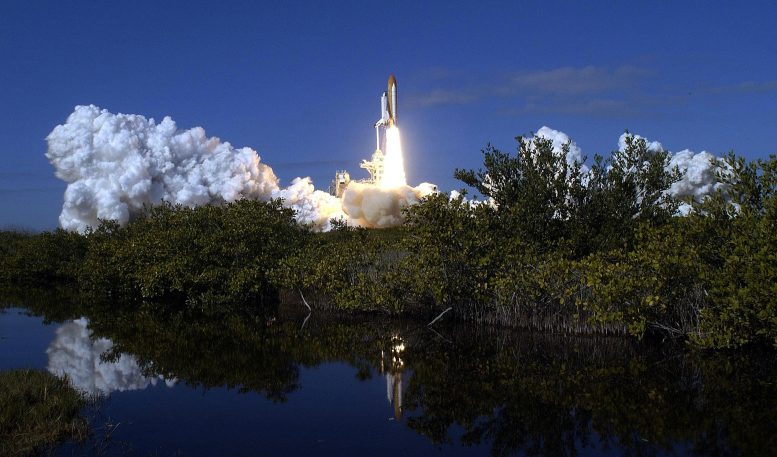
The CRS-19 Cygnus spacecraft is named after NASA astronaut Dr. Laurel Clark who flew aboard Columbia STS-107. In this image, the launch of space shuttle Columbia on mission STS-107 is reflected in nearby water as billows of smoke and steam roll across the landscape. Following a flawless and uneventful countdown, liftoff occurred at 10:39 a.m. EST on January 16, 2003. The 16-day research mission was the 28th flight of the orbiter Columbia and the 113th flight overall in NASA’s Space Shuttle Program. Columbia and the STS-107 crew were lost over east Texas during the landing descent to Kennedy Space Center on February 1, 2003, approximately 16 minutes before landing. Credit: Courtesy of Scott Andrews
Cygnus is targeted to launch today, August 1 from NASA’s Wallops Flight Facility in Virginia, carrying more than 8,200 pounds of supplies and science to the station. On Friday, August 4, Hoburg will capture Cygnus using Canadarm2, and Rubio will act as backup, marking Northrop Grumman’s 19th commercial resupply mission.
Near the end of the day, Rubio consolidated food supplies in preparation for Cygnus’s arrival. Meanwhile, Hoburg verified the battery power of jetpacks attached to spacesuits. The jetpacks, also known as SAFERs (Simplified Aid for EVA Rescue), provide astronauts the ability to maneuver back to the station in the unlikely event they became untethered during a spacewalk.
UAE (United Arab Emirates) Flight Engineer Sultan Alneyadi completed orbital plumbing tasks in the morning. He then moved into the Harmony module to prep for Friday’s space freighter capture and ended his day setting up the Berthing Camera System in the Unity module.
NASA astronaut Stephen Bowen conducted Immunity Assay operations, an ongoing investigation that aims to monitor the impact of spaceflight stressors on cellular immune functions.
The three cosmonauts, Commander Sergey Prokopyev and Flight Engineers Dmitri Petelin and Andrey Fedyaev, all prepared for an upcoming Russian spacewalk on August 9.



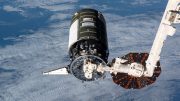
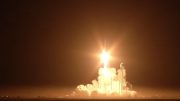

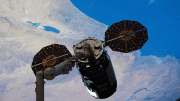
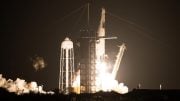
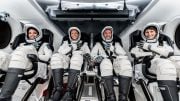
Be the first to comment on "Robotic Arms and Jetpacks: Gearing Up for Cygnus’s Arrival at the ISS"